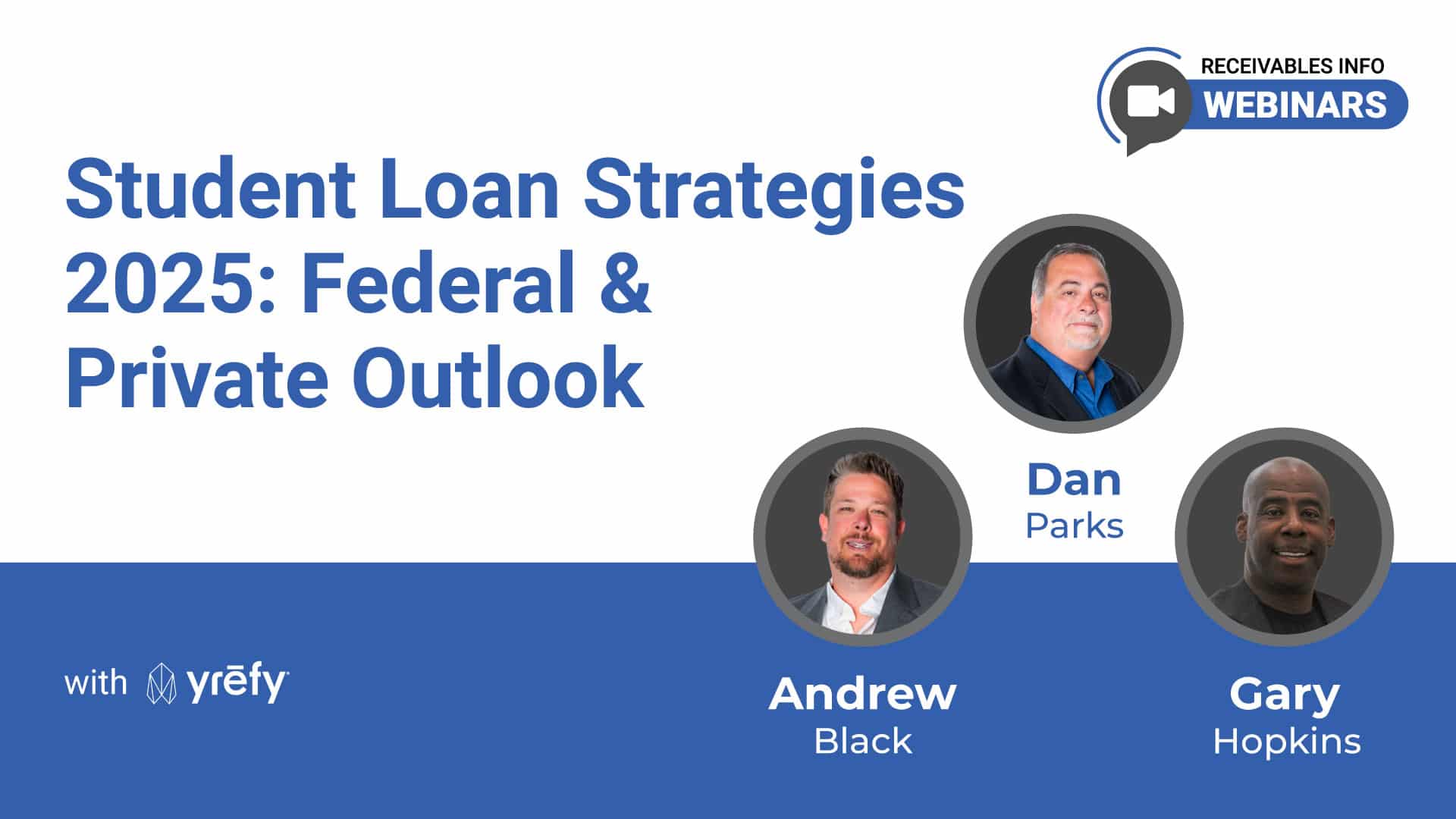
Student Loan Strategies 2025: How Experts Are Navigating the Federal Shake-Up
Introduction: Why Student Loan Strategies 2025 Matter More Than Ever
In 2025, the student loan system faces extraordinary disruption. Sweeping changes—ranging from halted repayment programs and court-ordered policy reversals to an executive order aimed at dismantling the Department of Education—have left borrowers and lenders confused and unprepared. The resulting regulatory chaos is unlike anything the industry has seen in decades.
This article is based on expert insights shared during a live webinar moderated by Receivables Info’s Adam Parks. Together with Andrew Black and Dan Parks of Yrefy, and former U.S. Department of Education official Gary Hopkins, the panel examined the impact of current student loan policy, default data trends, and private refinancing solutions to stabilize the lending ecosystem.
The Evolution of Student Loan Policy Changes
Student Loan Policy Changes That Reshaped the Landscape
Over the past 12 months, several landmark events have shifted the future of student loan lending:
- The SAVE repayment plan, central to the Biden administration’s forgiveness agenda, was blocked in court.
- The FFEL and Direct Loan programs were revealed to have conflicting treatment rules.
- An executive order proposed dismantling the Department of Education altogether.
These disruptions have not only delayed repayment for many borrowers but also paralyzed enforcement mechanisms like wage garnishments and loan servicing.
“That’s probably one of the biggest challenges we’ve got right now — you don’t know what’s real and what’s not because nothing has really been implemented.” — Gary Hopkins
“The FFELP program, while it was challenged and clunky, worked better than anything we’ve got right now.” — Gary Hopkins
Private Student Loan Refinancing as a Stabilizing Force
How Private Student Loan Refinancing is Stepping In
With the federal infrastructure in disarray, private refinancing platforms like Yrefy are becoming essential bridges for borrower relief. Fixed-rate products that reward performance and offer investor protection have emerged as stable alternatives for borrowers left behind by federal delays.
“You’ve got no place for these borrowers to go. They’ve never created a refinance program. And they can’t go anywhere unless they default.” — Andrew Black
Private lenders are seizing the opportunity to serve students, especially those with incomplete or defaulted federal loans, offering structured pathways to financial rehabilitation.
Understanding the Student Loan Default Data
Why Student Loan Default Data Matters in 2025
The 2025 TransUnion report highlights rising delinquencies in subprime credit tiers. Analysts observe a sharp increase in missed payments among borrowers who either expected forgiveness or remained in limbo amid legal uncertainty.
“They’re telling servicers they have to provide 30-day notice before they do a garnishment, and that 30-day notice has to include three different contact methods.” — Dan Parks
Key Data Points:
- Delinquency in the 580–619 credit tier rose significantly in Q1 2025.
- Collections remain frozen for most federal loans.
- Confusion around repayment start dates has lowered engagement.
For private lenders and debt buyers, this data offers an opportunity to revise underwriting strategies, identify distressed borrower segments, and model for volatility.
Best Practices for Navigating Student Loan Policy Chaos
Actionable Approaches for Lenders and Servicers
- Re-evaluate Risk Models: Include updated delinquency data, particularly among subprime borrowers.
- Enhance Borrower Communication: Proactively explain legal changes and repayment expectations.
- Partner with Private Platforms: Work with refinance providers that serve distressed borrowers.
- Monitor Legislation: Maintain flexibility and anticipate further litigation or policy reversals.
- Invest in Legal Readiness: Update garnishment protocols and servicing disclosures to meet new federal requirements.
Quotes from the Experts
“That’s probably one of the biggest challenges we’ve got right now — you don’t know what’s real and what’s not because nothing has really been implemented.” — Gary Hopkins
“The FFELP program, while it was challenged and clunky, worked better than anything we’ve got right now.” — Gary Hopkins
“You’ve got no place for these borrowers to go. They’ve never created a refinance program. And they can’t go anywhere unless they default.” — Andrew Black
“They’re telling servicers they have to provide 30-day notice before they do a garnishment, and that 30-day notice has to include three different contact methods.” — Dan Parks
Key Takeaways: Student Loan Strategies for 2025
- Student loan policy changes in 2024–2025 disrupted repayment expectations.
- Private student loan refinancing is a critical alternative for borrowers ineligible for forgiveness.
- Student loan default data must be factored into new credit models.
- Legal preparedness and borrower education are essential to reduce confusion and improve performance.
- Collaboration across legal, servicing, and investment stakeholders can stabilize borrower outcomes.







